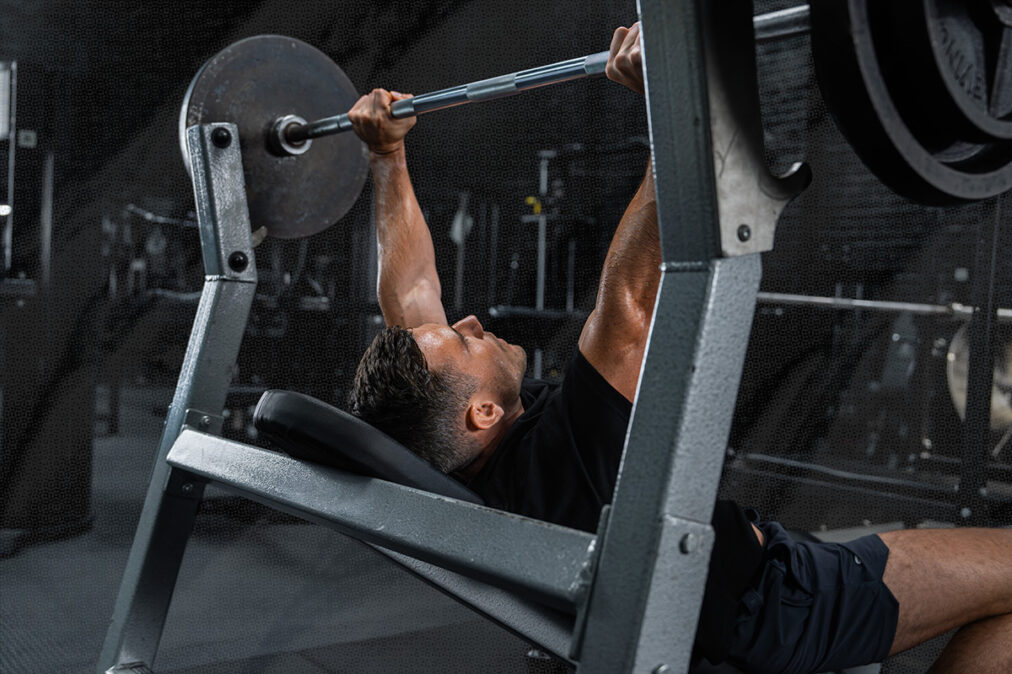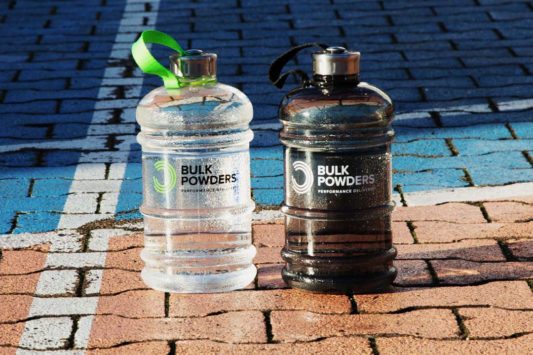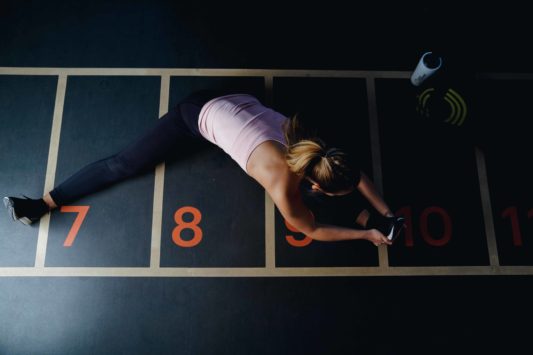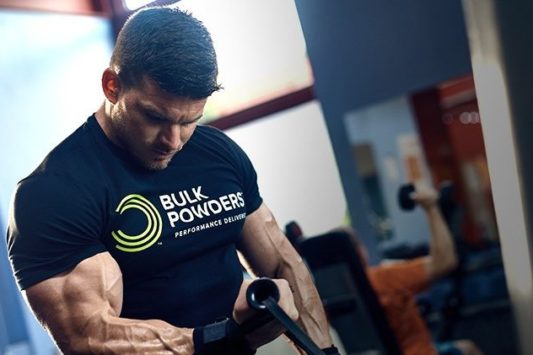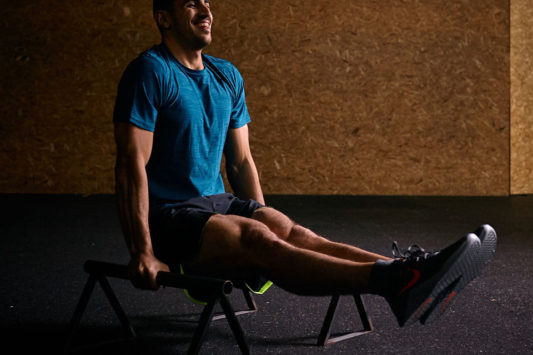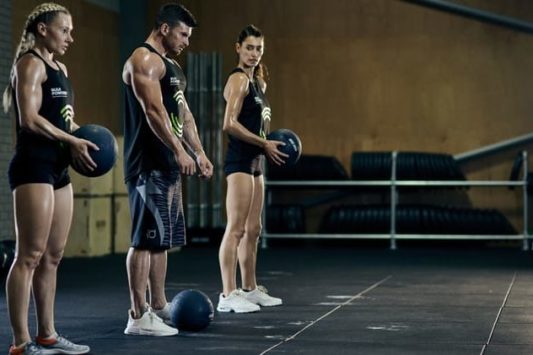Push day is a crucial component of any well-rounded fitness regimen as it targets the muscles at the front of your body. Here we look at everything you need to know about push day, exploring the principles behind building a strong, functional and aesthetic anterior.
Whether you’re a novice lifter or advanced, we provide evidence-based information on the most effective push exercises, push workouts and push day routines.
WHAT IS A PUSH DAY WORKOUT?
During a push day, you focus specifically on three muscle groups: the chest, shoulders, and triceps. In a PPL split, this type of workout is performed one or two times a week Alongside pull day and leg day workout.
Push days are often split into two: chest and shoulders (or push day one and push two). Chest begins with a heavy compound movement such as bench press, while shoulders with overhead press.
WHICH MUSCLES DOES PUSH DAY WORK?
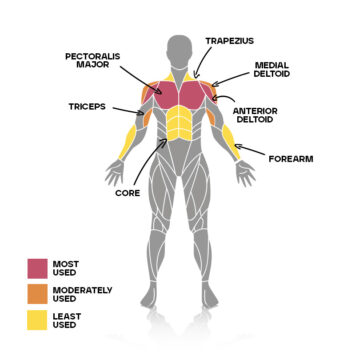
Push day übungen: was trainiert man bei push day?
FLAT BENCH PRESS
One of the king compound movements and three pillars of powerlifting, the bench press is an essential movement for push day.
In terms of muscles the bench press works, it mainly involves the pectoralis major and anterior deltoid, but also works the core and forearms.
This movement can also be done with dumbbells. This movement demands greater control from your chest to keep the dumbbells steady. For this reason, it’s a more difficult movement than barbell bench press.
Most of you will be familiar with this movement, so we’ll spare you the basic details. But here’s a couple of advanced tips that many people get wrong:
- Use your legs. Get your legs into a position that allows you to generate power from them. They shouldn’t be sitting there idle.
- Make sure the bar path is at an angle – not straight. At the top of the movement (with your arms extended), the bar should be about level with your eyes. At the bottom (with the bar against your body), it should be at your lower chest, around your nipples.
INCLINE BENCH PRESS
This is the same movement as above, but at an incline. The incline angle targets the upper portion of your pectorals, allowing for a balanced, full look in your chest. Many people like to have both incline bench press and flat bench press in their programmes
Many will do barbells with one movement and dumbbells with another. The most common way to do this is Flat Bench with a barbell, and load up the weight. Then do incline bench with dumbbells, focusing more on getting that deep contraction and big pump.
CLOSE GRIP BENCH PRESS
An underrated movement this, best performed with a barbell. Essentially, perform a bench press with a narrow grip. This increases the range of motion of your arms, making it far more challenging.
As this movement demands greater stimulus from your triceps, it’s responsible for improving your strength – particularly in the lockout. It really helps with the final portion of the bench.
CABLE FLYES
A great exercise for generating a massive pump. You need two sides of a cable machine. Set the weight at a modest weight you can perform 8-12 reps with. Pull the cable, get into position and press. You need to squeeze at the end of the movement and really pump as much blood as possible into your chest.
DIPS
Dips are one of the best bodyweight movements you can do, adding big resistance for your chest and anterior deltoid. For some reason, many emit this movement from their routine. Big mistake.
This is one of the best movements for adding size and definition to your upper body. It’s a great finisher on a push day, especially if you can adjust the weight with a pin, allowing yourself to maintain the quality of your reps.
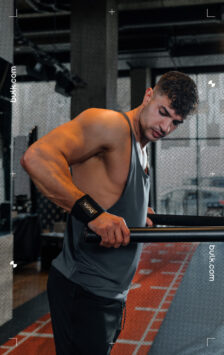
OVERHEAD SHOULDER PRESS
Now onto the shoulder exercises. Overhead shoulder press can be done with a barbell or dumbbells. It targets the shoulder, mainly the anterior and medial deltoids.
The core is also a vital part of this movement in order to keep your back straight. Without a stable core, you could easily fall backwards. For this reason, it’s important to brace before you lift, especially if lifting heavy weights.
DUMBBELL SHOULDER PRESS
Similar to overhead press, of course, dumbbell shoulder press works the anterior and medial deltoids.
These are often performed sitting down, meaning there is more load on the shoulders, making the movement more difficult and require less weight. Pick the dumbbells up, place them onto your thighs. Flick your thighs up, allowing you to get them to your shoulders. Press the dumbbells upward, locking out at full extension. Lower them, press again.
LATERAL RAISES
The most popular isolation movement for your shoulders. This involves picking up some dumbbells, probably between 5-10kg and lifting them out to your sides. They work your anterior and medial deltoids. You’ll see everyone doing these, but rarely do people do them with perfect form.
The trick with this movement is to think of your hands like hooks and let your shoulders do the work. Concentrate on your shoulders and muscle contraction. Lateral raises work your anterior (front) and medial (middle) deltoids.
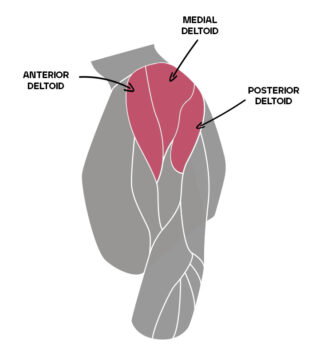
REAR DELT FLYES
This is a rare movement that is both a push and pull shoulder exercise. It’s performed with dumbbells, in a similar manner to lateral raises, but with your back parallel to the floor. This means the posterior (rear) deltoids are used.
You may have noticed that in each of these movements, your anterior and medial deltoid have been getting a hammering – especially the anterior, which is active in pretty much every single movement here.
For this reason, muscular imbalances in your shoulder are common, with people having large anterior deltoids and small rear delts.
Doing this isolation movement for your rear delt is vital to balance these out. You’ll get some secondary activity on pull movements, such as pull-ups, but doing them in isolation is important to ensure your shoulder gets a rounded, capped look.
This movement can also be performed with cables.
TRICEP CABLE PUSHDOWNS
Get a straight-bar and attach to the cable. Make sure the hook is way above your head. Grab the bar with an overhand grip and press down with your triceps. For the movement to work, you need to keep your upper arm parallel to your body.
This means keeping your elbow still. Think of your elbow acting like a pin that your forearm rotates around. Don’t do what people mean and start moving your whole arm. Your elbow and upper arm should be as still as possible.
Here’s a tricep routine created by the late Charles Poliquin. It’s an absolute killer. Pick a rep you can comfortably do 12 reps with, then perform this as a tri-set:
Wide-grip tricep push down: 8 reps with a tempo of 1-0-4
10 seconds rest
Close-grip tricep push down: AMRAP with a tempo of 1-0-3
10 seconds rest
Underhand grip tricep push down: Lighten the weight by one pin and do AMRAP with a tempo of 1-0-2
Rest 2 minutes and repeat one more time
SKULLCRUSHERS
Skullcrushers are a tricep movement done with a barbell or EZ bar. It involves lying down on the bench and slowly lowering the barbell towards your forehead (hence, skullcrusher). This is a tricky movement to get the form right. Many people thinking they’re doing skullcrushers are actually doing pullovers.
The trick is to follow the same logic as cable pushdowns. Once your upper arm and elbow are in position, they need to stay still. Let the triceps do the work.
PUSH-UPS
Almost thought we’d missed it out, right? Push-ups or press-ups are the OG of push movements, and they’re well worth their place in this list and in the gym.
Unlike Dips, push-ups require isometric stability from your core, adding an extra element of strength and demand from your body.
Cool tip: if you want to do incline push-up, you put your leg up on a chair or your bed. It feels like that should be declining, but it’s not. It targets your upper chest, like an incline bench press would.
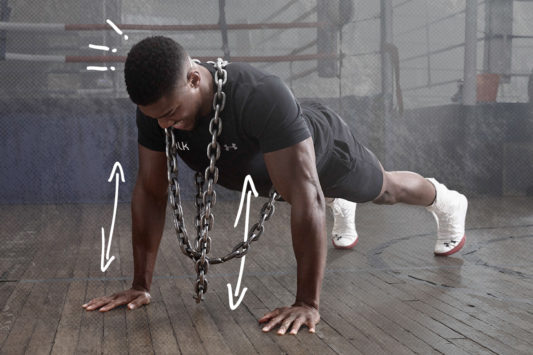
PUSH DAY WORKOUT ROUTINE EXAMPLES
PUSH 1 (CHEST FOCUS)
Bench press 5×5 / 4×8
Close-grip bench press 3×10
Lateral raises 4×8
Cable flyes 4×8
Tricep cable pushdown 4×10 (or x2 tri-set)
Push-ups / Dips 3×10
PUSH 2 (SHOULDER FOCUS)
Overhead shoulder press or Dumbbell shoulder press 4×8 / 5×6
Lateral raises 4×12
Incline bench press 4×8
Rear delt flyes 4×12
Dips 4×10 / Push-ups 4×10
PUSH DAY WORKOUT VITAL TIPS
Many people overdo push day, in that they perform push movements way too often. This can result in muscular imbalances. Push day works the anterior muscles, so if you train these and neglect your posterior chain, notable imbalances will start to occur.
It is common, from this respect to see people with defined anterior deltoids, whereas their medial and posterior delts are lacking size. This makes the shoulders look imbalanced, affecting posture too.
HOW TO WARM UP ON PUSH DAY
Shoulders need close attention in warm-ups. Always start with some dynamic stretches, even if it’s just as simple as arm circles or arm crossovers.
For optimal shoulder health, it’s recommended to do some shoulder rotations with a 2.5kg plate. Hold the plate, place your arm at a right angle, like in the position at the bottom of a shoulder press. Then, keeping your arm in that right-angled position, rotate your arm using your shoulder.
When lifting heavy weights, such as in bench press, always work up to your working sets. So if you’re doing 4 sets of 8 at 80kg, make sure to do a warm-up set of 40kg, then maybe 60kg. Apply this same logic to other movements. Never dive right into your working sets without warming up. You’ll not only not perform to your optimal, but you’ll risk serious injury too.
RELATED ARTICLES
Eager to learn more? We believe that every person, with support, has the right to transform their lives through fitness. That’s why we’ve put together hundreds of articles with expert advice, all to help you on your fitness journey. From structuring a pull day to more shoulder exercises, check out our relevant articles below:
Pyramid sets Running in the cold
How to use wrist wraps Leg day workout
HIIT heart rate Fitness training methods
Full body split Building muscle mass
Best macro split How to lean bulk
